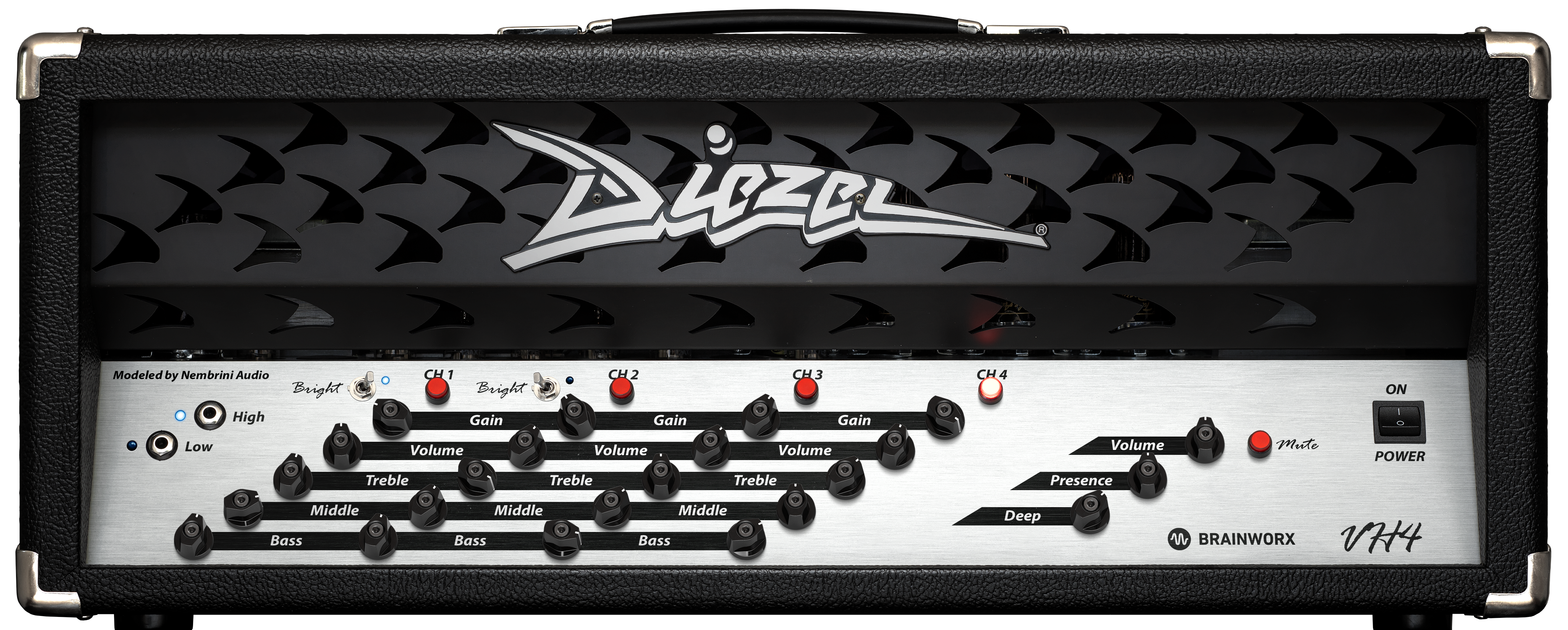The Metal Amp of Legends
In 1994, unimpressed with and tired of the tones available in other amps, Peter Diezel set out to create his perfect sound by building his own amp, the Diezel VH4. Once the word got out, the VH4 quickly established itself as a serious guitarist’s must have amp, making its way to the rigs of such legends as Metallica, Tool, Journey and many others. At the time the VH4 was released, it was a truly revolutionary design that offered a ton of flexibility and user-friendly features. To this day, the Diezel VH4 lives in a league of its own.
At the heart of the VH4 is a 100 watt output section coupled with four distinct preamp channels that provide everything from ultra clean tones to massively distorted madness. The four channels (Clean; Crunch; Mega and Lead) are packed with unparalleled tonality, definition and superb clarity. At lower gain settings, you can easily play with the now-classic Diezel sparkly sheen. But kick the gain up a notch and you'll take the Clean channel into the more aggressive Townshend/Hiwatt zone.
The Difference Is In The Channels
Channel 1 (Clean)
This channel was created to offer pristine clean sounds, rich with harmonics and power. Setting the gain control somewhere in the upper third range will yield a mild and warm tone. While dialing in the gain at lower settings will produce more percussive and penetrating clean sounds. This tonality is reminiscent of a cross between a Fender Twin and a Hiwatt 100, yet with a smoother dynamic response.
Channel 2 (Crunch)
A true companion for anyone who enjoys playing the blues. You can really hear this channel shine in the lower frequency range. Here you can get everything from clean to distorted and due to the different voicing, the 2nd channel can sound a bit softer than Channel 1 in clean mode while also get close to Channel 3’s tone in higher gain mode. It is here where you can access the musical raw power of the VH4.
Channel 3 (Distortion)
A Heavy Metal player’s dream, this channel is all about a tight rhythm section. With added compression, the tone in this channel becomes more limited in dynamic range, especially in the lower frequencies. This small loss is compensated for by a negative feedback loop which adds a thick low end without dirtying up the mid range. You can use the ‘Deep’ knob in the master section to have a more precise control of the lows. The gain structure in Channel 3 was built to deliver an outstanding distorted sound even with guitars that have a rather low output. You can start out with the gain at 12 o’clock and go from there while shaping your tone.
Channel 4 (Ultra High Gain)
With more mids than Channel 3, use Channel 4 to get a beautiful lead tone. This channel can really help you cut through the band and carve out your own sonic space. Feel free to set the gain around 1 o’clock to get a roaring high gain distortion that can truly soar. Using the volume control here can be really helpful to match the other channel volumes.
Extra Digital Power
Taking things a step further, Brainworx added an FX rack that contains a Noise Gate, switchable high and low-pass filters, and a Power Soak circuit that provides an easy way to tweak the overdrive, without having to boost the output gain. Another great feature that you can only harness from the plugin version of the amp is the 100+ recording chains (Impulse Responses) that were derived from a number of well known cabinets and recorded through Brainworx’ vintage Neve console with a huge selection of vintage microphones and outboard gear, all amounting to the ‘record ready’ tones instantly.
Don’t sleep on this beast of an amp and try it out in your DAW today!










